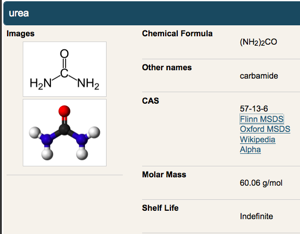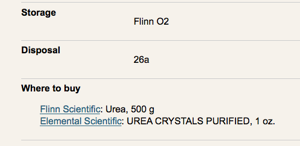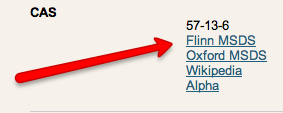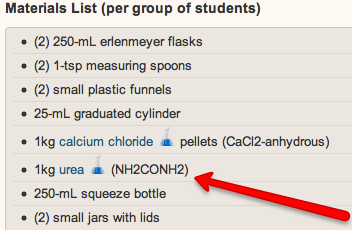
Let’s say you’re an afterschool educator who has put together a killer Science of Sports unit. You’re letting what the kids want to know shape your lessons; so far you’ve managed to find hands-on activities to help them explore all of their burning sports science questions.
When one student wanted to know more about reaction time, you found Think Fast! How Quick Are You? When a baseball fan wanted to know how curveballs, sliders and screwballs work, you came up with Thrown for a Curve.
Now a student wants to know how those cold packs—the ones athletes use to ice injuries—work when there’s obviously no ice involved. You found a great activity Hot and Cold that teaches how some chemical processes release heat energy while other chemical processes absorb heat energy, thus (as in a cold pack) making the chemicals cold to the touch.
That’s the good news. The bad news is you don’t have a background in chemistry, and feel a bit intimidated about working with chemicals. For starters, just how dangerous are the two substances—calcium chloride and urea--required for the Hot and Cold activity? Now you can find out, all within the activity’s write-up at howtosmile.org.
• Click on a chemical listed in the materials list of any howtosmile.org activity.
• Up pops a window that has information like the chemical’s formula, molar mass, and shelf life.

• It also includes links to where to buy the chemical and how to handle it.

• If we go to the Chemical Abstracts Service (CAS ) section and click on the link to the Flinn Material Safety Data Sheet (MSDS) associated with urea, for instance, we learn that while working with this chemical you need to wear goggles, chemical-resistant gloves and a chemical-resistant apron.


While all SMILE activities have value-added metadata that allows educators to search by everything from prep time to materials required, the new chemistry collection also provides information about the chemicals themselves. "We hope these additions to the chemistry activities in howtosmile.org will make chemicals less intimidating to informal science educators," says Chemistry Collection Coordinator Joel Rosenberg in a previous blog post, "and that it will help kick-start the informal chemistry educator community on SMILE."

